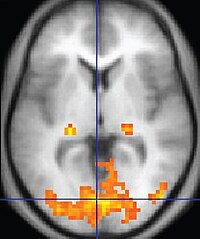
Comparison of an in‐house hybrid DIR method to NiftyReg on CBCT and CT images for head and neck cancer
Sign Up to like & getrecommendations! Published in 2022 at "Journal of Applied Clinical Medical Physics"
DOI: 10.1002/acm2.13540
Abstract: Abstract An in‐house hybrid deformable image registration (DIR) method, which combines free‐form deformation (FFD) and the viscous fluid registration method, is proposed. Its results on the planning computed tomography (CT) and the day 1 treatment… read more here.
Keywords: dir method; house hybrid; method; proposed method ... See more keywords

Novel approach to semi‐quantification of tracer accumulation in dopamine transporter scan
Sign Up to like & getrecommendations! Published in 2022 at "Journal of Applied Clinical Medical Physics"
DOI: 10.1002/acm2.13626
Abstract: Abstract Purpose Accurate tracer accumulation evaluation is difficult owing to the partial volume effect (PVE). We proposed a novel semi‐quantitative approach for measuring the accumulation amount by examining the approximate image. Using a striatal phantom,… read more here.
Keywords: tracer; region; accumulation amounts; accumulation ... See more keywords

Automatic renal lesion segmentation in ultrasound images based on saliency features, improved LBP, and an edge indicator under level set framework
Sign Up to like & getrecommendations! Published in 2018 at "Medical Physics"
DOI: 10.1002/mp.12661
Abstract: PURPOSE Segmentation of lesions in ultrasound images is widely used for preliminary diagnosis. In this paper, we develop an automatic segmentation algorithm for multiple types of lesions in ultrasound images. The proposed method is able… read more here.
Keywords: edge indicator; segmentation; ultrasound images; proposed method ... See more keywords

Fast learning of fiber orientation distribution function for MR tractography using convolutional neural network.
Sign Up to like & getrecommendations! Published in 2019 at "Medical physics"
DOI: 10.1002/mp.13555
Abstract: PURPOSE In diffusion-weighted magnetic resonance imaging (DW-MRI), the fiber orientation distribution function (fODF) is of great importance for solving complex fiber configurations to achieve reliable tractography throughout the brain, which ultimately facilitates the understanding of… read more here.
Keywords: network; msmt csd; method; number ... See more keywords

Paired cycle-GAN based image correction for quantitative cone-beam CT.
Sign Up to like & getrecommendations! Published in 2019 at "Medical physics"
DOI: 10.1002/mp.13656
Abstract: PURPOSE The incorporation of cone-beam CT (CBCT) has allowed for enhanced image-guided radiation therapy. While CBCT allows for daily 3D imaging, images suffer from severe artifacts, limiting the clinical potential of CBCT. In this work,… read more here.
Keywords: image; correction; method; cycle ... See more keywords

A k-space-to-image reconstruction network for MRI using recurrent neural network.
Sign Up to like & getrecommendations! Published in 2020 at "Medical physics"
DOI: 10.1002/mp.14566
Abstract: PURPOSE Reconstructing the images from undersampled k-space data is an ill-posed inverse problem. As a solution to this problem, we propose a method to reconstruct MR images directly from k-space data using a recurrent neural… read more here.
Keywords: space; network; space data; proposed method ... See more keywords

Unsupervised arterial spin labeling image super-resolution via multi-scale generative adversarial network.
Sign Up to like & getrecommendations! Published in 2022 at "Medical physics"
DOI: 10.1002/mp.15468
Abstract: PURPOSE Arterial spin labeling (ASL) magnetic resonance imaging (MRI) is an advanced non-invasive imaging technology that can measure cerebral blood flow (CBF) quantitatively without a contrast agent injection or radiation exposure. However, because of the… read more here.
Keywords: asl images; resolution; interpolation; proposed method ... See more keywords

Estimation of undistorted images in brain echo‐planar images with distortions using the conjugate gradient method with anatomical regularization
Sign Up to like & getrecommendations! Published in 2022 at "Medical Physics"
DOI: 10.1002/mp.15881
Abstract: Abstract Purpose Although echo‐planar imaging (EPI) is widely used for diffusion magnetic resonance (MR) imaging, EPI images suffer from susceptibility‐induced geometric distortions. We herein propose a new estimation method for undistorted EPI images using anatomical… read more here.
Keywords: registration based; method; estimation; proposed method ... See more keywords

Complete region of interest reconstruction by fusing multiview deformable three-dimensional transesophageal echocardiography images.
Sign Up to like & getrecommendations! Published in 2022 at "Medical physics"
DOI: 10.1002/mp.15910
Abstract: BACKGROUND While three-dimensional transesophageal echocardiography (3D TEE) has been increasingly used for assessing cardiac anatomy and function, it still suffers from a limited field of view (FoV) of the ultrasound transducer. Therefore, it is difficult… read more here.
Keywords: fusion; tee; multiview; method ... See more keywords

Synthetic-to-real domain adaptation with deep learning for fitting the intravoxel incoherent motion model of diffusion-weighted imaging.
Sign Up to like & getrecommendations! Published in 2022 at "Medical physics"
DOI: 10.1002/mp.16031
Abstract: BACKGROUND Intravoxel incoherent motion (IVIM) is a type of diffusion-weighted imaging (DWI), and IVIM model parameters (water molecule diffusion rate Dt, pseudo diffusion coefficient Dp, and tissue perfusion fraction Fp) have been widely used in… read more here.
Keywords: diffusion; ivim; model; method ... See more keywords

Accelerated submillimeter wave-encoded magnetic resonance imaging via deep untrained neural network.
Sign Up to like & getrecommendations! Published in 2023 at "Medical physics"
DOI: 10.1002/mp.16425
Abstract: BACKGROUND Wave gradient encoding can adequately utilize coil sensitivity profiles to facilitate higher accelerations in parallel magnetic resonance imaging (pMRI). However, there are limitations in mainstream pMRI and a few deep learning (DL) methods for… read more here.
Keywords: magnetic resonance; network; wave encoding; resonance imaging ... See more keywords